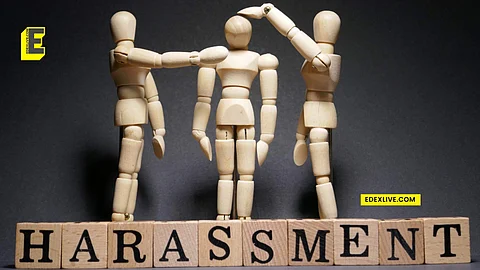

Student harassment is a serious problem in India, affecting students of all ages and genders. In 2023, there were over 1,00,000 reported cases of student harassment in India, according to the National Crime Records Bureau (NCRB). This number is likely much higher, as many cases go unreported.
Student harassment can take many forms, including physical violence, verbal abuse, sexual harassment, and cyberbullying. It can occur in schools, colleges, universities, and other educational institutions.
Types of student harassment
- Physical violence: This includes hitting, kicking, pushing, and other forms of physical assault
- Verbal abuse: This includes name-calling, insults, and threats
- Sexual harassment: This includes unwanted touching, groping, kissing, and sexual comments or jokes
- Cyberbullying: This includes posting embarrassing or threatening messages or images about a student online
Impact of student harassment
Student harassment can have a devastating impact on the victims. It can lead to physical and emotional problems, such as anxiety, depression, and post-traumatic stress disorder (PTSD). It can also lead to academic problems, as students who are being harassed may have difficulty concentrating in class and completing their assignments.
Causes of student harassment
There are a number of factors that can contribute to student harassment. These include:
- Traditional gender roles: In India, there is a strong emphasis on traditional gender roles. This can lead to boys and girls being treated differently, and can create an environment where harassment is more likely to occur.
- Lack of awareness: Many students are not aware of what constitutes harassment, or how to report it. This can make it difficult to prevent and address harassment.
- Fear of stigma: Victims of harassment may be afraid to report it because of fear of stigma or retaliation. This can prevent them from getting the help they need.
Prevention and response
There are a number of steps that can be taken to respond to student harassment effectively. These include:
- Educating students: Students should be educated about what constitutes harassment, and how to report it. This education should be provided at all levels of education, from primary school to university.
- Creating a safe environment: Schools and other educational institutions should create a safe environment where students feel comfortable reporting harassment. This includes having clear policies and procedures in place for reporting and addressing harassment.
- Providing support to victims: Victims of harassment should receive the support they need to recover. This may include counselling, academic support, and other services.
The Indian government has taken a number of steps to address student harassment. These include:
- The Protection of Children from Sexual Offences Act (POCSO Act): This act was passed in 2012 and provides for the protection of children from sexual offences, including sexual harassment.
- The National Policy on Education (NPE): The NPE was revised in 2020 and includes a number of provisions to prevent and address student harassment.
- The Rashtriya Madhyamik Shiksha Abhiyan (RMSA): This scheme provides funding to states to improve the quality of secondary education. The scheme includes provisions to prevent and address student harassment.
Despite these efforts, student harassment remains a serious problem in India. More needs to be done to educate students about harassment, create a safe environment where students feel comfortable reporting harassment, and provide support to victims.
